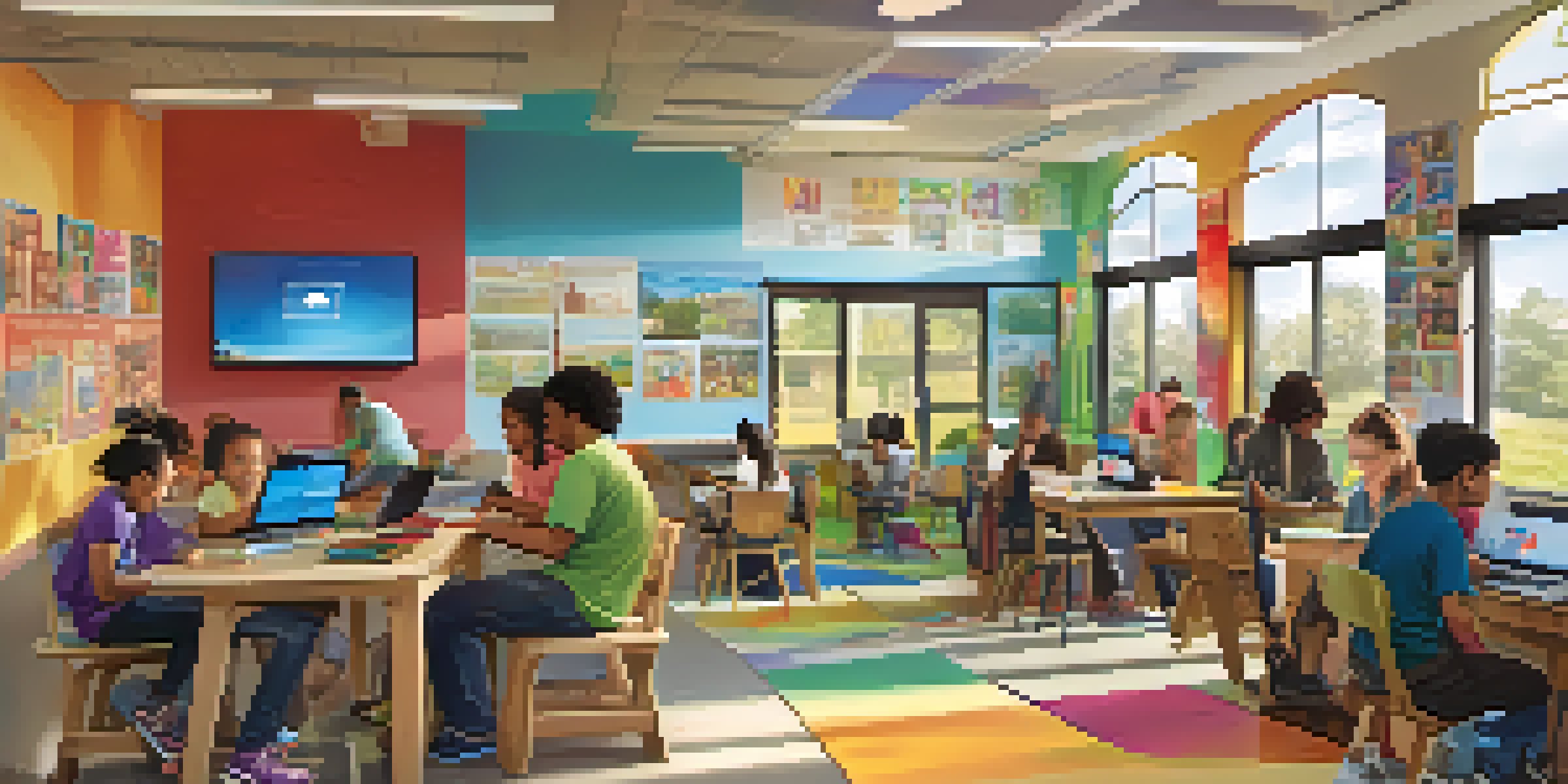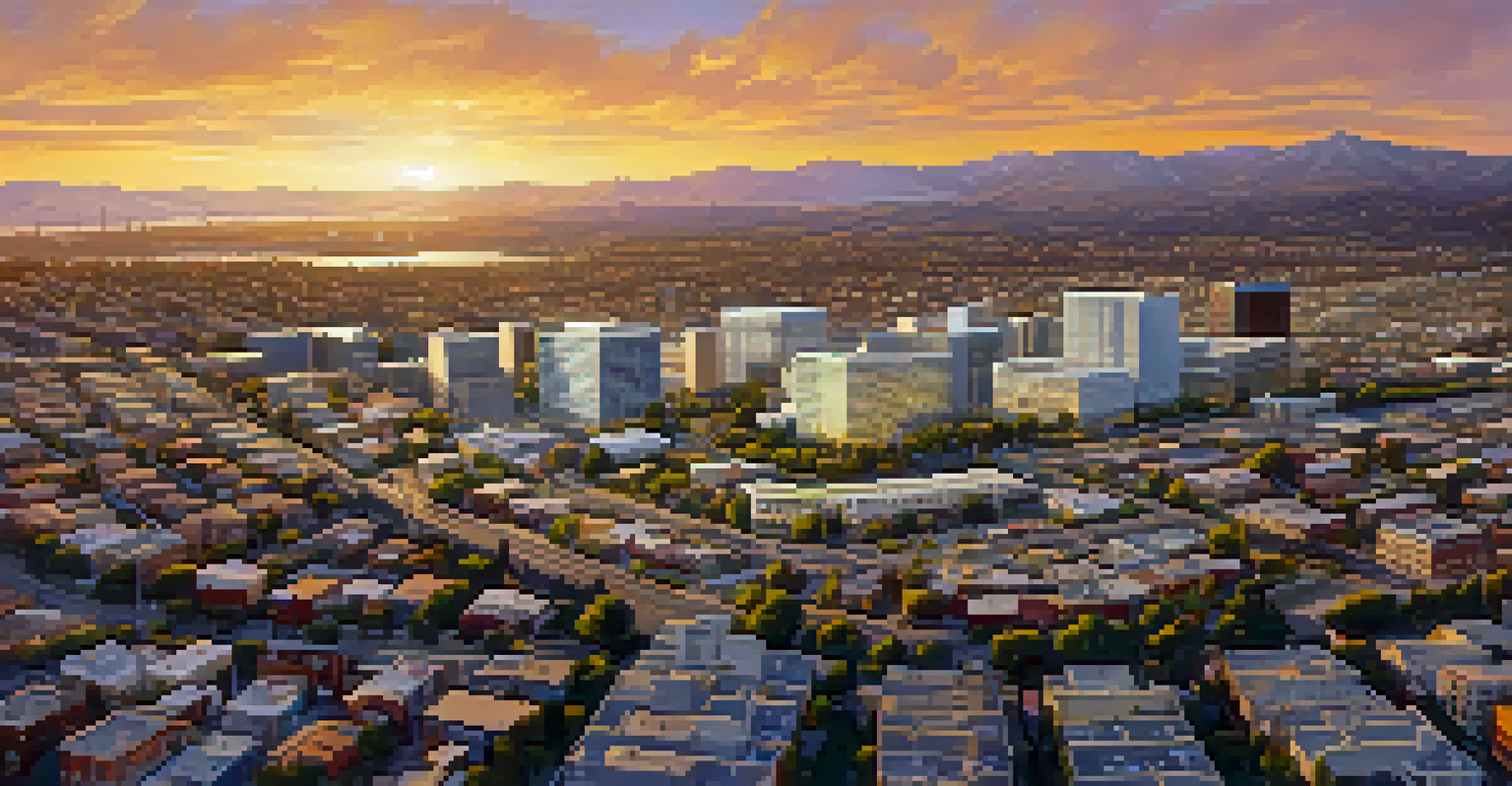Impact of COVID-19 on the Digital Divide in San Jose

Defining the Digital Divide in San Jose
The digital divide refers to the gap between those who have easy access to digital technology and those who do not. In San Jose, a city known for its tech innovation, this divide is particularly stark. Factors like income, education, and geography contribute to this disparity, affecting residents' ability to connect online.
The digital divide is not just a technological gap; it is a gap in opportunity, access, and equity that affects the most vulnerable in our society.
In many neighborhoods, particularly those in lower-income areas, families struggle with limited internet access. This lack of connectivity can hinder educational opportunities, job applications, and even access to essential services. As technology becomes increasingly integral to daily life, the consequences of this divide grow more serious.
The pandemic has thrown a spotlight on these issues, as remote work and online learning became necessary. With millions relying on the internet for daily activities, the contrast between connected and unconnected communities became even more pronounced.
COVID-19 Accelerates the Digital Divide
As COVID-19 swept through the globe, it forced many aspects of life to move online, from education to healthcare. In San Jose, the immediate shift to virtual environments magnified the existing digital divide, leaving many without the tools needed to adapt. Families without reliable internet or devices found themselves at a significant disadvantage during lockdowns.

Schools quickly transitioned to remote learning, but not all students were able to participate effectively. Many lacked the necessary technology, such as laptops or tablets, and internet access varied widely based on location and income. This situation led to educational setbacks for students in underserved communities, widening the gap further.
Digital Divide Affects Access to Tech
In San Jose, disparities in income and education limit many residents' access to essential digital technology.
The pandemic revealed how deeply intertwined digital access is with socio-economic status. Those with resources could transition smoothly to online solutions, while others faced barriers that stymied their progress and opportunity.
Community Responses to the Digital Divide
In response to the growing digital divide during the pandemic, various community organizations stepped in to help bridge the gap. Nonprofits, local businesses, and government initiatives launched programs to provide devices and internet access to families in need. These efforts aimed to ensure that education and essential services remained accessible.
Digital access is a prerequisite for economic opportunity in the 21st century; without it, many will be left behind.
For example, initiatives like 'Tech for Families' distributed laptops and offered digital literacy training to help families navigate online platforms. Community centers became hubs for internet access, allowing residents to connect and learn in a safe environment. These local efforts played a crucial role in keeping communities engaged and informed.
However, while these initiatives made a difference, they also highlighted the need for long-term solutions. The temporary fixes could not address the root causes of the digital divide, underscoring the importance of ongoing investment in infrastructure and education.
The Role of Education in Closing the Gap
Education is a powerful tool for closing the digital divide, especially in a tech-centric area like San Jose. Schools and universities have a unique opportunity to lead the charge in providing equitable access to technology. By integrating digital literacy into the curriculum, educators can help students develop essential skills for the future.
During the pandemic, many schools implemented creative solutions to keep students engaged, such as virtual tutoring and online resources. However, the effectiveness of these solutions varied greatly, depending on students' access to technology and the internet. The disparities in educational outcomes during this time emphasized the urgent need for equitable access.
Community Initiatives Address Gaps
Local organizations launched programs during the pandemic to provide devices and internet access to underserved families.
Looking ahead, schools must continue to prioritize technology access and literacy to ensure that all students have the tools they need to succeed. Partnerships with tech companies and community organizations can help bridge this gap and foster a more inclusive educational environment.
The Economic Impact of the Digital Divide
The digital divide is not just an educational issue; it also has significant economic implications. In San Jose, where the tech industry is a major economic driver, access to digital tools can influence job opportunities and income levels. Those without internet access may miss out on remote work options and essential job training programs.
As businesses increasingly adopt digital platforms for operations, employees lacking digital skills face higher barriers to entry. This situation can perpetuate cycles of poverty and limit economic mobility for disadvantaged communities. The pandemic has highlighted the need for targeted workforce development programs to support those affected by the digital divide.
Investing in digital skills training can empower individuals and foster a more equitable workforce. By providing access to learning resources, communities can help workers adapt to the evolving job market, ultimately supporting economic growth and stability.
Long-term Solutions to the Digital Divide
Addressing the digital divide in San Jose requires long-term strategies that go beyond temporary fixes. Sustainable solutions must involve collaboration between government, private sector, and community organizations. By working together, stakeholders can create comprehensive plans that enhance internet infrastructure and increase access to technology.
One promising approach is the expansion of affordable broadband services in underserved areas. Partnerships with internet service providers can help lower costs and improve access for low-income families. Additionally, ongoing digital literacy programs can equip residents with the skills needed to thrive in an increasingly digital world.
Long-term Solutions Essential for Equity
Sustainable strategies, including affordable broadband and digital literacy training, are crucial for bridging the digital divide in San Jose.
As we move forward, it’s crucial to prioritize inclusivity and equity in these efforts. Ensuring that all community members have access to technology will not only benefit individuals but will also strengthen the overall economy and community resilience.
Conclusion: Bridging the Digital Divide in San Jose
The impact of COVID-19 on the digital divide in San Jose serves as a wake-up call. It has exposed the vulnerabilities of communities and highlighted the urgent need for action. As we emerge from the pandemic, it’s essential to prioritize bridging this divide to create a more equitable society.
By leveraging the lessons learned during the pandemic, we can develop targeted strategies that address the root causes of the digital divide. This involves not only providing access to technology but also fostering digital literacy and economic opportunities for all residents.

Ultimately, bridging the digital divide is not just about technology; it’s about ensuring that everyone has the chance to succeed in an increasingly digital world. Together, we can build a more inclusive future for San Jose and its residents.